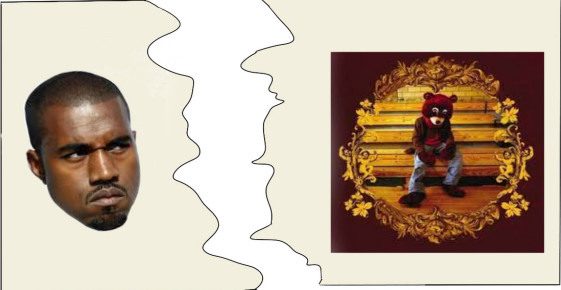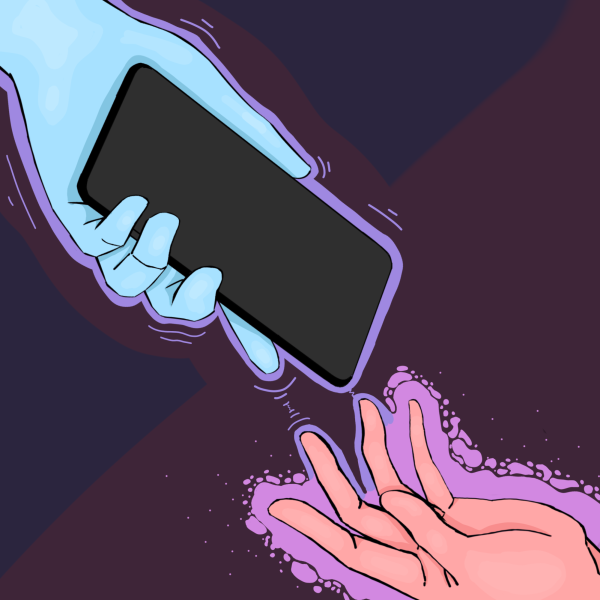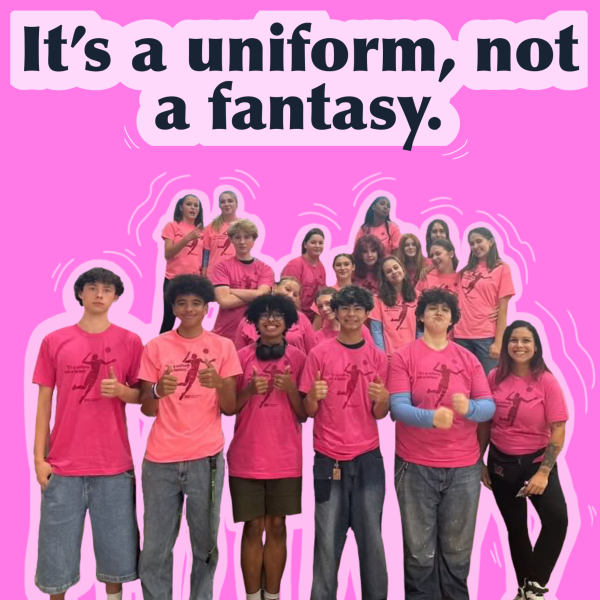Consumers need to consciously address both artist, art

Illustration by Lane Shaffer
As people become aware of what their idols are doing, a question has become
increasingly critical when consuming art: Should we separate the art from the artist and if so,
when?
Artists have a professional life and a personal life, and the decisions that they make in their
personal lives bleed over into their art.
While this inherently matters, it should not immediately dissuade the audience from supporting their art, the consumption of media is such a personal experience that the burden of deciding whether or not to support them and doing the research to make that decision falls on the consumer.
Art takes many forms: visual, performing, auditory and literary just to name a few.
Creators across all mediums have been called out and scrutinized for their actions. This scrutiny
is having both positive and negative effects on our culture.
For some, the consumption of art is naturally separated from the artist. Junior Marley Sussman has had a strong connection to music his entire life. Recent events have not wavered Sussman’s connection to music. However, he has had to do some reflecting.
“I immediately go to Kanye West,” Sussman said. “He’s one of my favorite people to listen to when I listen to music…but there is also that other side of him. It’s like his life as a celebrity and his life as a musician are kinda separate for me.”
Sussman explained that he is able to criticize the personal life of Ye, formerly known as Kanye West, while simultaneously enjoying his music. Sussman went on to explain that he thinks this is very important when it comes to people like Ye.
“It’s important to recognize the wrongdoings of artists, “Sussman said, “but also you can still appreciate their art while still recognizing that they aren’t a good person.”
Sussman is not alone in this. Senior Nykole Jackson is a creator of music, as well as graphic art. Jackson says she does not think that decisions and things people have done in the past make them who they are. However, Jackson believes the situation is more complicated than that. She said that there were few cases where she got invested in the artist, but there were still cases where actions turned Jackson away from the creator’s product.
“There are some people I have listened to that and they’ve done things like R. Kelly
and DaBaby I was just like, that’s not okay and I don’t really listen to their music anymore,”
Jackson said.
There seems to be a trend among artists where morals play heavily into creation as well.
“Usually I try to say or create something that I believe in or something that I think motivates me,” said Jackson.
This tendency may speak to a larger trend indicating that separating the art from the artist is more difficult than first thought. For some, it is near impossible.
“I don’t want to support an artist who is doing things that are against my morals,” said Kanani Miyamoto, a Portland printmaker and teacher at Pacific University who focuses her art on community and education. For Miyamoto, separating the art from the artist is almost always impossible.
Miyamoto also said that the first thing that comes to her mind when she hears the name of artists that contend with her morals is what they have done and not necessarily what they have created.
Dr. Seuss is a famous example of this dilemma. In 2021 the company that publishes all work by Dr. Seuss, Dr. Seuss Enterprises, ceased the publishing of six books due to them portraying groups in harmful and inaccurate ways.
“For me, I cannot support Dr. Suess or his literature anymore. I can see how some people can, and I don’t think that it’s wrong,” Miyamoto said, “I wouldn’t hate someone if they said, ‘I love this Dr. Suess book.”
For Miyamoto, making the split between the art and the artist is extremely difficult. However, she agrees that it is the consumer’s choice when doing so. Even saying that she will not condemn another person for that decision.
Jackson, Miyamoto and Sussman all have open minds. The will to communicate with those who disagree allows for productive discussion which matters most when it comes to heavy topics such as separating the art from the artist.
Regardless of which side of the line people fall, one thing should hold true; art is too personal to judge others for the viewer’s choice in art or artist. It is the duty of the individual to make decisions about what they consume and who it comes from. Standing by this allows for more productive discussions and flexibility when it comes to analyzing the stories of other people.






